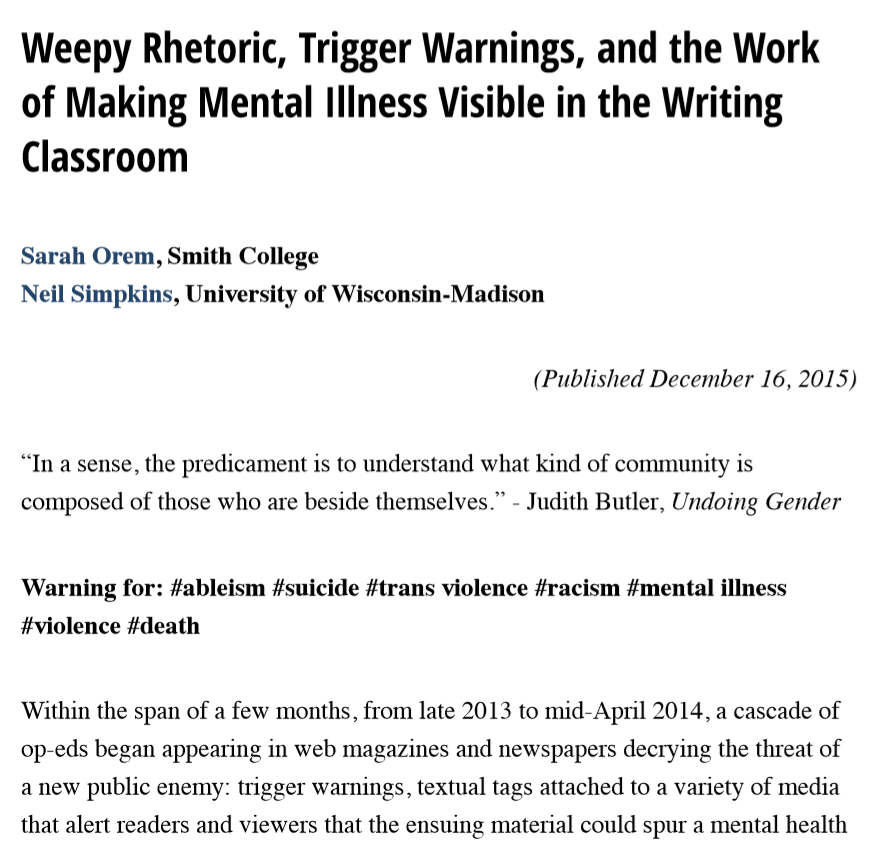Trigger. It’s a buzzword—a currently popular term. Which means a lot of people these days are talking about trigger warnings and asking questions about them. Do we need them? How should we use them? Should they be legally mandated? What are the benefits and risks that come with them?
Let’s unpack this timely and important topic a little more. We’ll seek to understand what it entails, the pros and cons, and how to include trigger warnings in our presentations.
What are Trigger Warnings?
According to Psychology Today, trigger warnings are “brief statements that warn about potentially upsetting content.” They seek to acknowledge that some content might be upsetting to certain audience members. The serve to warn those who have trauma or mental illness ahead of time so they can choose how and whether to engage with certain content.
The main arguments about trigger warnings center around whether the burden falls on the sender or the receiver of the communication. Should the person putting out the message be responsible for alerting the audience of potentially disturbing content? Or should the person consuming the media or message be responsible for dealing with individual triggers as they arise? Let’s take a look at a few of the arguments both against and for trigger warnings.
Cons
Some researchers are worried that trigger warnings might actually increase anxiety. They say, “trigger warnings are meant to alleviate distress . . . but multiple lines of research suggest trigger warnings could either increase or decrease symptoms of distress.” However, in their studies, Mevagh Sanson, Deryn Strange, and Maryanne Garry found that trigger warnings didn’t really harm or help.
Perhaps the most troubling thing is that there simply isn’t enough research at this time to know for sure. The trend of including trigger warnings and the arguments surrounding them are way ahead of the research. The Atlantic cites Payton Jones, co-author of a 2018 paper on the subject as saying that there is little evidence that they help anyone and, “It’s crazy that trigger warnings have spread so far before a single study had come out evaluating them.”
Pros
On the other hand, there are many communicators who prefer to err on the side of caution. These people believe that trigger warnings show concern for the audience by recognizing trauma and validating mental illnesses as legitimate.
In their article “Weepy Rhetoric, Trigger Warnings, and the Work of Making Mental Illness Visible in the Writing Classroom,” Sarah Orem and Neil Simpkins say, “With trigger warnings, [someone] who might experience a flashback or panic attack from a graphic depiction of rape or suicide can allow that event to unfold in a place of his or her choosing.” This aims to level relationships with an imbalance of power, like teacher/student, boss/employee, or speaker/audience member. Trigger warnings give the control of choice back to those who might be without it in a situation like a presentation. With a trigger warning present, that person can now make the decision to listen with caution or to leave the room.
Some people worry that trigger warnings might dissolve into a slippery slope of censorship. They fear that certain types of content would become banned, keeping us from talking about difficult, but important topics. But Orem and Simpkins remind us that “Typically, trigger warnings are an additive and not a subtractive phenomenon.” In other words, those who choose to use trigger warnings don’t change content or take it out, they simply add the warning prior to that content.
How to Include Them
Whether or not you choose to include trigger warnings is up to you. If you choose to include them in your presentation, we suggest making them visible and clear, but brief. Perhaps you include them on the opening screen of your presentation. Or add them to the marketing material for an event. You could even address them in the first few sentences of your speech. Trigger warnings in print are pretty simple. You can see below the warnings that Orem and Simpkins included in their own communication.

No matter how you choose to handle content that might be sensitive, make sure your audience is on the forefront of your mind. Responsible communicators are always in touch with how their message could potentially affect others.
At Ethos3, our presentation design and coaching is informed by scientific research. Ready to learn more about how we can help you with presentation development, design, or delivery?